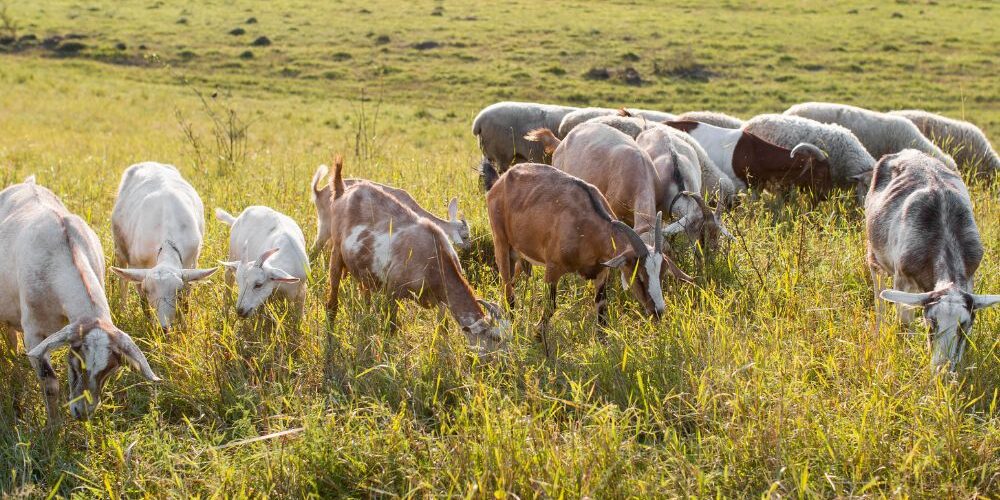One of the most challenging landscapes in Kenya or anywhere in the world is the Arid and Semi-Arid Lands (ASALs) areas. These areas, including regions like Turkana, Wajir, and Garissa, Kajiado, Kitui, Laikipia among others are characterised by low and erratic rainfall, often receiving less than 500 mm annually. This climatic condition poses a challenge to traditional agricultural practices, making ASALs unique and demanding innovative solutions.
ASALs cover approximately 80% of Kenya’s landmass spreading across 29 counties. The need to farm in these areas goes beyond mere agricultural expansion; it’s a crucial step toward ensuring food security, economic sustainability, and the overall well-being of the communities inhabiting these lands.
We’ll discuss the significance of embracing sustainable agritech practices to unlock the potential of these challenging landscapes. The journey into ASAL agriculture is not just about overcoming adversity; it is about ensuring a prosperous future for regions that are critical to Kenya’s agricultural resiliency.
Challenges of Agricultural Practices in ASALs
Harsh climatic conditions, water scarcity, and poor soil fertility are among the primary challenges faced by farmers in ASALs. Conventional agricultural practices struggle to yield viable results, necessitating a paradigm shift towards sustainable solutions.
Sustainable Agritech: A Beacon of Hope for ASAL Agriculture
Sustainable agritech is a transformative approach to agriculture that offers hope for Kenya’s Arid and Semi-arid Lands (ASALs). It encompasses a range of innovative practices that aim to enhance crop and livestock productivity, improve soil health, conserve water resources, and promote sustainable land management in ASALs.
Key principles of sustainable agritech for ASAL agriculture include:
| Principle | Description |
|---|---|
| Conservation agriculture | Minimising soil tillage, maintaining permanent soil cover, and practising crop diversification to protect soil health and enhance productivity. |
| Water-smart agriculture | Utilising efficient irrigation techniques, rainwater harvesting systems, and drought-resistant crops to optimise water use and cope with water scarcity. |
| Community-led agribusiness | Empowering local communities to organise, manage, and market their agricultural products, fostering collaboration and economic empowerment. |
| Precision agriculture | Leveraging technology, such as sensors, drones, and data analytics, to make informed decisions about crop management, resource allocation, and pest control. |
Sustainable agritech offers promising solutions to address the challenges faced by ASAL agriculture, including:
| Challenge | Solution |
|---|---|
| Erratic rainfall and water scarcity | Water-smart agriculture techniques can help conserve and utilise water resources effectively, mitigating the impacts of drought. |
| Extreme temperatures | Drought-resistant and heat-tolerant crops can be cultivated to withstand harsh climatic conditions. |
| Nutrient-poor soils | Conservation agriculture practices can improve soil fertility and nutrient retention, enhancing crop yields. |
| Overgrazing and deforestation | Sustainable grazing management practices and reforestation efforts can restore degraded lands and promote sustainable land use. |
| Pests and diseases | Integrated pest management strategies, utilising natural pest control methods and resistant crop varieties, can reduce reliance on harmful pesticides. |
Enabling factors for the successful adoption of sustainable agritech in ASALs include:
| Factor | Description |
|---|---|
| Supportive government policies and regulations | Creating an enabling environment that promotes sustainable agriculture practices and provides incentives for farmers. |
| Capacity building and training | Providing farmers with the knowledge, skills, and resources to implement sustainable agritech practices effectively. |
| Access to finance and technology | Facilitating access to affordable credit, agricultural inputs, and appropriate technologies for ASAL farmers. |
| Infrastructure development | Investing in roads, irrigation systems, storage facilities, and market infrastructure to enhance connectivity and market access. |
| Research and development | Promoting research and development of sustainable agritech solutions tailored to the specific needs of ASAL ecosystems. |
Sustainable agritech holds immense potential to transform ASAL agriculture, paving the way for increased food security, improved livelihoods, and environmental sustainability. By embracing this approach and addressing the enabling factors, we can unlock the vast potential of ASALs and foster a thriving agricultural sector in these arid regions.
Conservation Agriculture: Nurturing the Land
Implementing conservation agriculture techniques, such as minimal soil disturbance and cover cropping, proves instrumental in preserving soil moisture and fertility. These practices contribute to sustainable farming in arid environments.
Water-Smart Agriculture: Harnessing Every Drop
Efficient water management is a linchpin in ASAL agriculture. Water-smart practices, including rainwater harvesting and drip irrigation, help maximise water usage, ensuring that each drop contributes to crop growth.
Community-Led Agribusiness: Empowering Local Communities
Engaging local communities in agribusiness fosters economic growth and community resilience. Empowering farmers through training, cooperative initiatives, and market linkages ensures sustained development in ASAL regions.
Technology-Driven Solutions: Precision Agriculture
Incorporating precision agriculture technologies, such as satellite imaging and sensor-based monitoring, optimises resource use. This data-driven approach enhances decision-making and boosts productivity in the face of climatic uncertainties.
Flourishing Crops in the Face of Adversity
Identifying and cultivating drought-resistant crops is pivotal for ASAL farmers. Sorghum, millet, and drought-tolerant varieties of maize prove to be resilient options, defying the odds of aridity. Developing and promoting crops with inherent resistance to drought ensures a more stable yield in ASALs. Such crops adapt to the challenging climatic conditions, providing a lifeline for farmers.
Despite the relentless sun, erratic rainfall, and nutrient-deficient soils, a diverse array of crops thrives, defying the odds and offering hope for sustainable agriculture in these challenging environments.
- Sorghum
Sorghum, a hardy grain crop with deep roots, stands as a testament to nature’s adaptability. Its ability to withstand prolonged periods of drought and thrive in poor soils makes it a staple food source for ASAL communities. Sorghum is a versatile crop, utilised for both human consumption and animal feed, providing nutritional sustenance and economic opportunities.
- Millet
Millet, another drought-resistant grain crop, is a nutritional powerhouse, rich in protein, fibre, and essential vitamins. Its resilience in harsh environments and adaptability to diverse soil conditions make it a valuable crop for ASAL agriculture. Millet can be consumed as porridge, baked into bread, or fermented into beer, offering a range of culinary and economic benefits.
- Cassava
Cassava, a starchy root crop, has become an increasingly important staple in ASALs. Its ability to tolerate low rainfall and poor soils makes it a reliable source of food even in challenging conditions. Cassava is highly versatile, utilised for both human consumption and animal feed, and can be processed into various products, including flour, tapioca, and ethanol.
- Sweet Potato
Sweet potato, a nutrient-rich root crop, is gaining prominence in ASAL agriculture. Its adaptability to diverse soil conditions and ability to withstand drought make it a valuable addition to ASAL diets. Sweet potatoes are packed with vitamins, minerals, and antioxidants, offering significant nutritional benefits.
- Cowpea
Cowpea, a leguminous crop, plays a crucial role in ASAL agriculture. Its ability to fix nitrogen from the air enhances soil fertility, improving crop yields and reducing the need for chemical fertilisers. Cowpeas are a valuable source of protein and fibre, providing nutritional benefits to both humans and animals.
- Pigeon Pea
Pigeon pea, a drought-tolerant legume, is another valuable crop for ASALs. Its ability to fix nitrogen and tolerate low rainfall makes it a sustainable source of protein and income for farmers. Pigeon peas can be consumed as a whole grain, ground into flour, or processed into various products, such as dhal and animal feed.
- Greenleaf Vegetables
Greenleaf vegetables, such as amaranth and spider plants, offer a surprising abundance of nutrients amidst the arid landscapes of ASALs. These leafy greens are packed with vitamins, minerals, and fibre, providing essential micronutrients to ASAL communities. Greenleaf vegetables can be grown in small spaces, requiring minimal water and inputs, making them accessible to even the most marginalised farmers.
- Fruits that thrive in ASALs
Despite the harsh conditions, a variety of fruits thrive in ASALs, adding a touch of sweetness and resilience to the landscape. Fruits such as mangoes, papayas, and citrus fruits provide essential vitamins and minerals, while also generating income-earning opportunities for farmers.
Livestock Production
Livestock production plays a crucial role in the livelihoods and economies of Kenya’s Arid and Semi-arid Lands (ASALs). Some hardy animals have adapted to the harsh conditions of ASALs, providing valuable sources of food, milk, and income for pastoralist communities. Here are some of the livestock that thrive in ASAL in Kenya:
Goats
Goats are one of the most common and adaptable livestock species in ASALs. Their ability to browse on a wide range of vegetation, including thorny bushes and weeds, makes them well-suited to the harsh grazing conditions of ASALs. Goats are also relatively resistant to diseases and can tolerate heat and drought. They provide valuable sources of meat, milk, and fibre, and are relatively easy to raise, making them an important asset for pastoralist communities.
The Boer goat, a breed known for its large size and fast growth, is particularly well-suited to ASAL conditions. The Galla goat, a native breed of Kenya, is also popular in ASALs due to its hardiness and adaptability.
Sheep
Sheep are another important livestock species in ASALs. They are known for their ability to convert coarse vegetation into nutritious meat and wool. Sheep are also relatively drought-tolerant and can survive on low-quality pasture. They provide valuable sources of meat, milk, and wool, and are often kept in flocks alongside goats.
The Somali Blackhead sheep, a native breed of Kenya, is well-adapted to ASAL conditions due to its heat tolerance and resistance to diseases. The Dorper sheep, a breed known for its fast growth and meat production, is also becoming increasingly popular in ASALs.
Camels
Camels, known as the “ships of the desert,” are uniquely adapted to ASALs. They can survive for extended periods without water and can travel long distances in search of grazing. Camels are used for transportation, milk production, and meat. Their ability to thrive in harsh environments makes them an invaluable asset for pastoralist communities in ASALs.
The Somali camel, a native breed of Kenya, is known for its large size, milk production, and ability to withstand harsh conditions. The Dromedary camel, another popular breed, is also well-adapted to ASALs and is used for transportation and meat production.
Cattle
Cattle are also raised in ASALs, though they are generally more susceptible to drought and disease than goats, sheep, and camels. However, cattle provide valuable sources of meat, milk, and hides. Improved animal genetics and sustainable grazing management practices can enhance cattle productivity and resilience in ASALs.
The Boran cattle breed, a native of Kenya, is known for its heat tolerance, disease resistance, and ability to thrive on low-quality pasture. The Sahiwal cattle breed, another popular choice for ASALs, is also known for its milk production and adaptability to harsh conditions.
Poultry
Poultry production is becoming increasingly important in ASALs, providing a valuable source of protein and income for pastoralist communities. Chicken breeds such as the Kuroiler and the Kakuzi are well-suited to ASAL conditions due to their hardiness and adaptability.
Bees
Beekeeping is also gaining popularity in ASALs, as bees play a crucial role in pollinating crops and producing honey. Local honeybee breeds, such as the African Stingless Bee, are well-adapted to ASAL conditions and can produce honey even during periods of drought.
Other Animal Farming
Other types of animal farming, such as rabbit rearing and fish farming, are also gaining traction in ASALs, providing additional sources of protein and income for pastoralist communities. Rabbit breeds such as the New Zealand White and the Flemish Giant are well-suited to ASAL conditions, while fish species such as tilapia and catfish are adaptable to the region’s climate and water resources.
We hope this article has shed some light into ASAL farming. What other technologies or practices have you discovered that work in such regions in Kenya or around the world?








